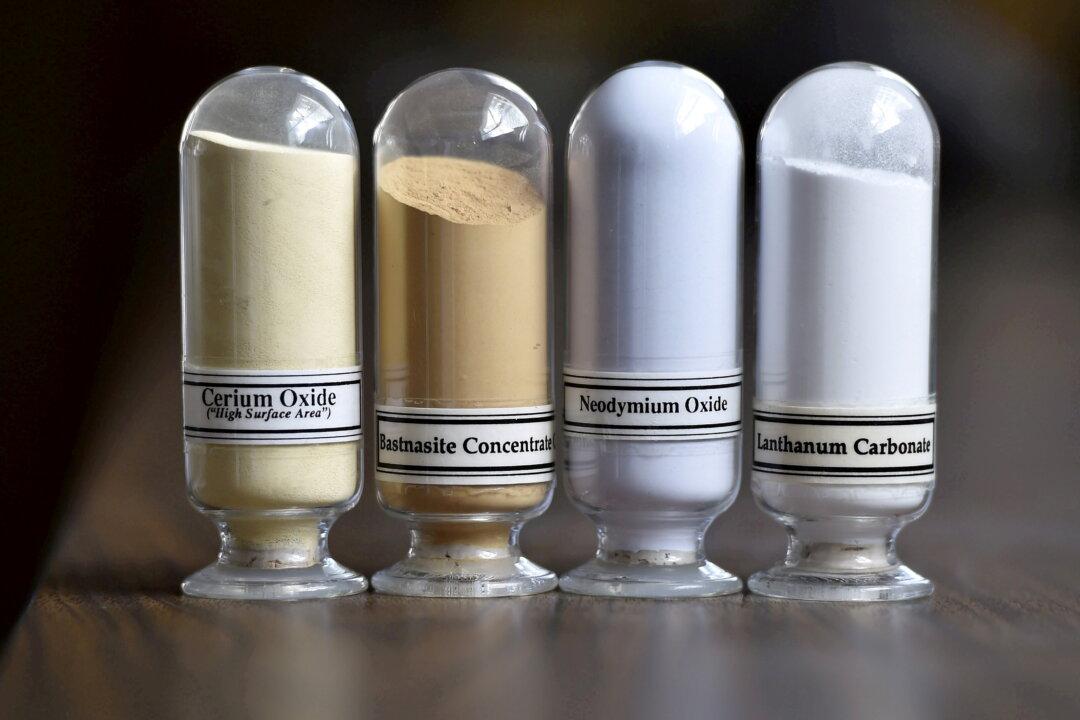Rare earth metal prices have risen sharply over the past year while the growing adoption of new technologies such as electric vehicles is likely to send costs even higher, according to analysts.
In the 12 months through September, the price of lithium carbonate—used in batteries, mobile devices, and spacecraft—surged 150 percent; the price of holmium oxide—used in magnets and sensors—rose 109.4 percent; and the price of praseodymium-neodymium oxide—used in magnets, motors, and wind turbines—jumped 73.7 percent, according to Shanghai Metals Markets (SMM) data cited by Nikkei Asia.





